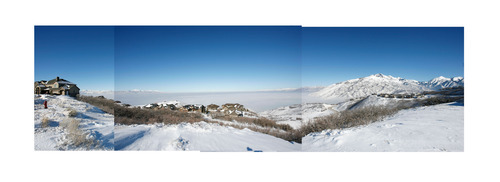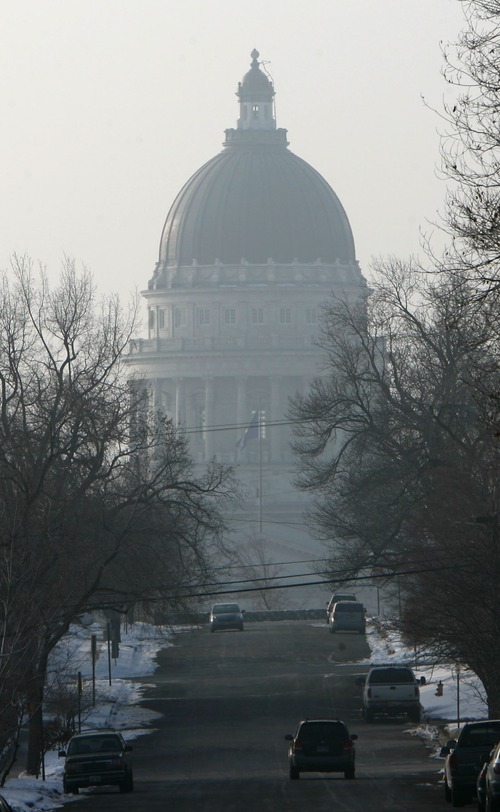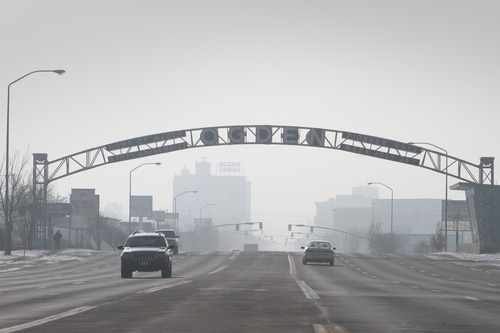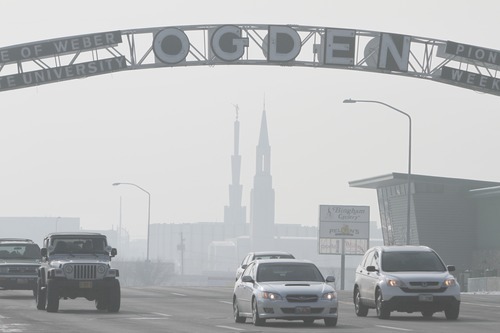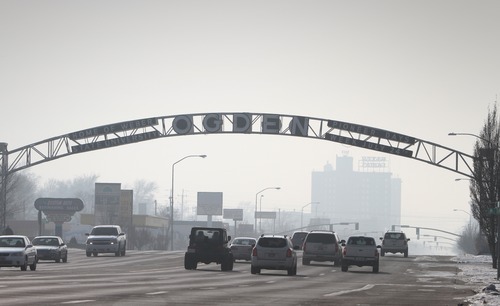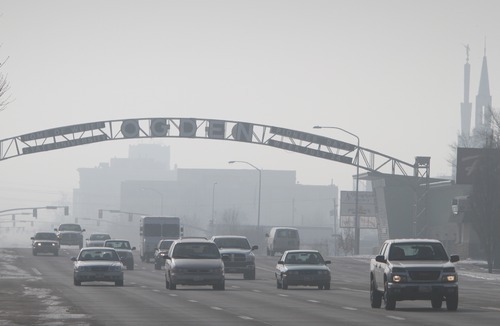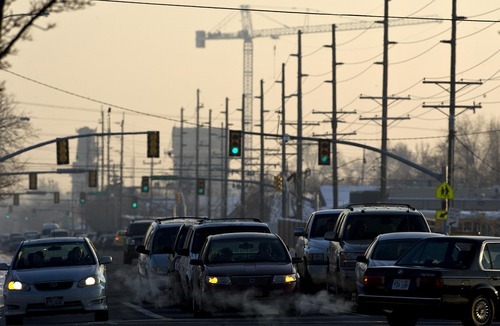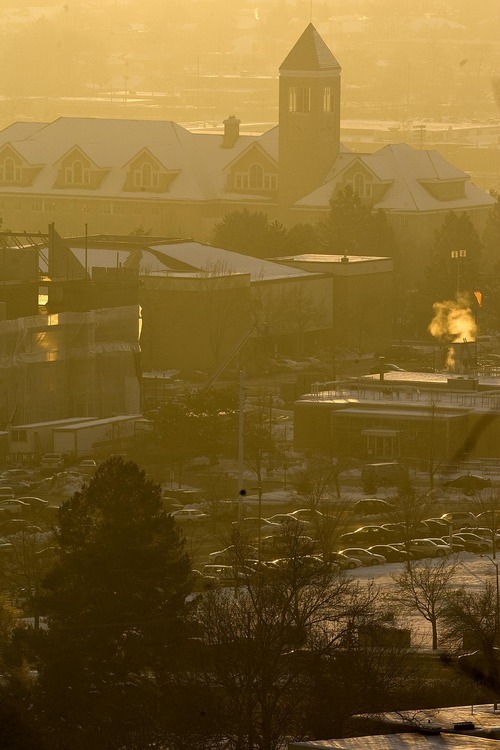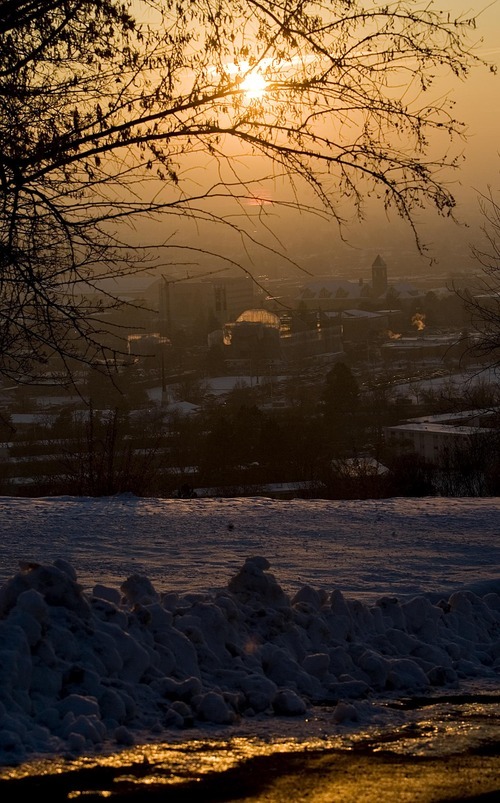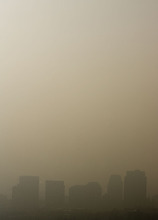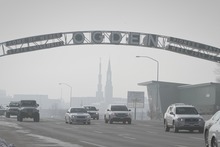This is an archived article that was published on sltrib.com in 2011, and information in the article may be outdated. It is provided only for personal research purposes and may not be reprinted.
If you thought the air looked bad in northern Utah on Friday, you were right: Four of the five most polluted locations in the country were in the Beehive State.
According to Air Now (http://www.airnow.gov), a national cooperative of government agencies, the worst air was measured in midafternoon in Logan, Salt Lake City, Washakie Reservation in Box Elder County and Ogden. La Grande, Ore., rounded out the top five.
But the "red air alert," which has been in effect for the past several days along the Wasatch Front and in Cache County, is expected to be canceled by Sunday as a Pacific cold front moves into the state, according to the Utah Division of Air Quality (DAQ) and the National Weather Service.
At 3 p.m. Friday, PM 2.5 concentrations — a soup of microscopic particles of soot and chemical pollutants — measured 96.9 micrograms per cubic meter of air in Logan, according to the Utah Division of Air Quality. In Salt Lake County, it was 91.1. The federal standard for hazardous air is 35.
The elevated pollution levels are the product of a typical January temperature inversion along the Wasatch Front, said Mike Conger, meteorologist for the National Weather Service.
An inversion occurs when cold air and pollution are trapped under a blanket of warm air aloft. The warm air puts a "lid" on everything in the basins below it, including pollutants suspended in the air, Conger said.
The inversion can be broken by low temperatures aloft and wind. The forecast for late Saturday calls for exactly that, as a storm system brings a 50 percent chance of snow. Air quality should be much improved by Sunday, Conger said.
Next week, a series of small weather systems will help air quality continue to improve, he said.
But even if air quality rebounds next week, the ill health effects of this week's inversion will remain, said Brian Moench, president of the Utah Physicians for a Healthy Environment. The health impacts on the human body remain for a month after such pollution spikes.
What's just as bad is that air pollution has a cumulative effect over the years on arteries and organs.
"This is a real public health crisis," he said. "We certainly ought to take it more seriously."
Air pollution at the levels experienced along the Wasatch Front and in Cache County this week is like smoking a pack of cigarettes a day for people who are outside all day, he said.
Buildings with air filtration systems offer some relief, but most homes do not filter out all the pollutants, according to Moench.
Although state and local agencies advise against driving during red-alert periods, most motorists don't change their habits, according to a study conducted by the Utah Department of Transportation last winter.
UDOT officials compared traffic volumes on green/yellow alert days with volumes on red alert days in Salt Lake and Weber counties, said spokeswoman Tania Mashburn.
There was a 4 percent reduction in traffic on red-alert days in Salt Lake County and a 3 percent drop in traffic in Weber County, the study found.
Stagnant air and fog led to some delays Thursday at Salt Lake City International Airport. But there were no delays Friday by 3 p.m., said spokeswoman Barbara Gann.
Tribune reporter Judy Fahys contributed to this report. —
Some ideas for dealing with winter pollution
This month's Care to Clear the Air Challenge is a contest to cut winter pollution and its impacts. You can find out more from its Facebook page and from the website caretocleartheair.org.
Also, the health advocacy group Breathe Utah offers an air-pollution emergency tool kit. Find it at breatheutah.org/emergency-plan.





